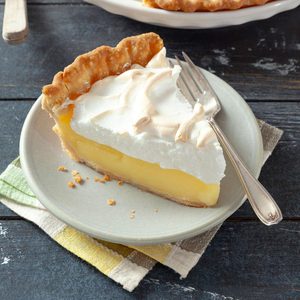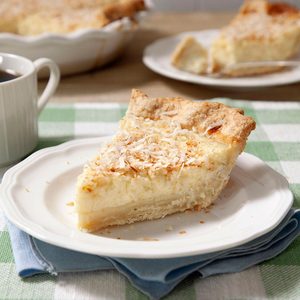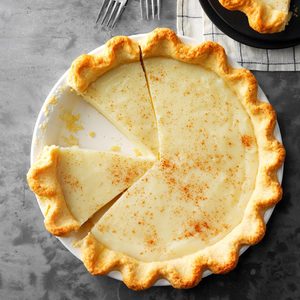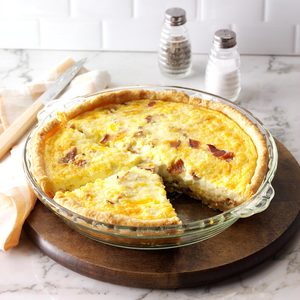Learn how to parbake and blind bake pie crust for the flakiest desserts. No soggy bottoms here!
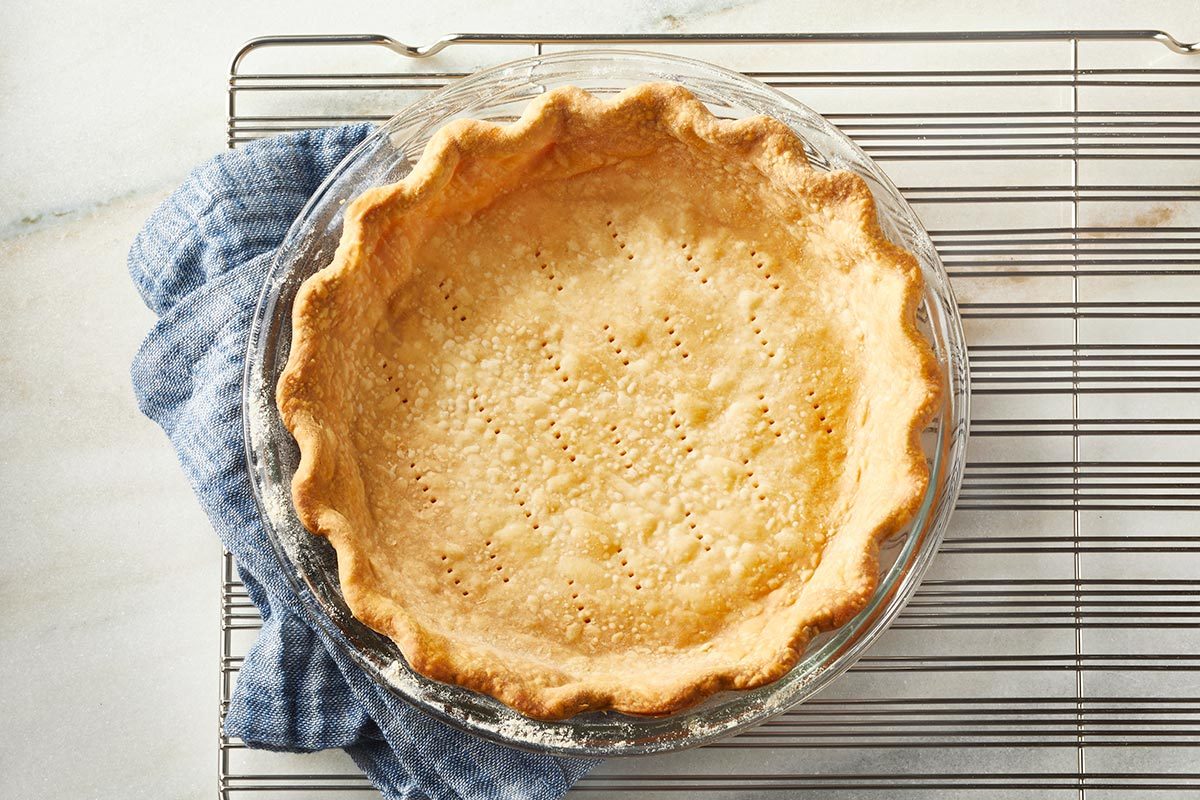
How to Blind Bake Pie Crust

Baking a homemade pie is a combination of art and science. While the flavorful filling is often the star of the show, there are a few steps required in order to set yourself up for success. It all starts with the pie crust.
Have you ever come across a recipe directing you to parbake or blind bake pie crust? These are common pie-baking techniques that can be applied to anything from a dreamy French silk pie to a classic berry pie. Both methods involve baking the pie crust for varying amounts of time before the filling is added. But what’s the difference between them, and what is the best method for blind baking or parbaking a crust? Here’s what you need to know to bake the best homemade pies.
On This Page
Blind Baking vs. Parbaking

What is blind baking?
Blind baking is the process of fully baking and then cooling a pie or tart crust before adding a no-bake pie filling. This is when you might use something like pie weights or dried beans to hold down the crust since the it bakes with no filling in it.
Why blind bake a pie crust?
You need to blind bake a pie crust when you’re making a pie with an uncooked filling or a stovetop-cooked filling. This method provides a fully baked and cooled crust that serves as a flaky base for recipes like cream pies or pudding pies.
What is parbaking?
Parbaking means partially baking the crust before you add the filling and put the pie back in the oven to finish the baking process. While blind baking ensures your pie crust is baked all the way through before adding a filling, parbaking just gives the crust a small head start.
Why parbake a pie crust?
Some fillings, when poured straight into a raw pie crust, can create excess moisture during the baking process and lead to a soggy texture. Partially baking the crust ahead of time helps to alleviate this. It also ensures that the bottom of the crust has enough time to fully bake without the filling becoming overcooked. While not always necessary, this is a helpful step to make a custard-based pie or pumpkin pie with a sturdy crust. The method can be used for any other fruit pie or other pastry crust-based dishes, such as homemade quiche.
Using Pie Weights vs. Docking the Crust
Using pie weights and docking are two methods to help keep a pie crust’s shape while either blind baking or parbaking. You can choose either method, depending on how much liquid is in your filling. Pie weights may be better at preventing seepage for pies with a lot of liquid in the filling. Some bakers like to use both methods together, docking the crust first and then adding pie weights.
How to use pie weights

Pie weights play an important role in keeping a pie crust’s shape while blind baking or parbaking. Press a piece of parchment into the pie crust. Then, fill the crust all the way to the top with pie weights. If you don’t have pie weights, use dry beans or granulated sugar. The weight will prevent the pie crust from shrinking or puffing up unevenly.
How to dock a pie crust

Docking a pie crust consists of poking tiny holes throughout the dough (like in Scottish shortbread). This step allows steam to escape from underneath the crust while baking, keeping it from puffing up in the oven. Use the tines of a fork to gently poke holes across the crust.
How to Blind Bake Pie Crust

Step 1: Choose your go-to pie dough
Start by making your preferred recipe for pie dough, like butter pie crust or graham cracker crust.
Step 2: Roll out the pie dough and chill
If you’ve chosen something like a butter pie crust, roll out your chilled pie dough and transfer it to the pie pan. Crimp or finish the edges with a decorative pie crust design, as desired. If you’re using a crumbly crust, like one made from graham crackers or Oreos, press the mixture into the pie pan. Chill the crust in the fridge for at least 30 minutes.
Step 3: Add the weights
Use the tines of a fork to dock the crust, if desired. Cover the pie crust with a sheet of parchment (the lining will make the weights easier to remove later) and fill it with pie weights. You can use ceramic pie weights, dried beans, uncooked rice or granulated sugar.
Editor’s Tip: If you use beans, rice or another grain to weigh down your pastry, don’t cook them later. Stash dried beans in a labeled Mason jar in the pantry to reuse with another pie later on. If you use sugar, you can choose to make use of it again once it has cooled.
Step 4: Bake the crust
Bake your pie crust at 400°F until the edges are lightly golden brown, about 15 to 20 minutes. Remove the weights and return the crust to the oven for an additional 5 to 10 minutes until it has deep, even browning.
How to Parbake Pie Crust

Step 1: Make (or buy) your pie dough
Make your homemade pie dough or purchase a store-bought pie crust option.
Step 2: Roll out the dough and chill
Roll out the pie dough and fit it into a pie pan. Crimp or finish the edges and return the crust to the fridge to chill for another 30 minutes or more.
Step 3: Add the weights
Dock the pie crust, if desired. Place a sheet of parchment in the pie crust and fill it with pie weights, dried beans, uncooked rice or granulated sugar.
Step 4: Bake
Bake the pie crust at 400° for about 15 minutes until the edges are light golden brown. Remove the pie weights and bake the crust for an additional three to five minutes. Let the crust cool completely.
Pie Crust FAQ

Can you blind bake premade pie crust?
Yes, you can absolutely blind bake or parbake a premade pie crust. To do this, follow the exact same steps as you would with a homemade pie crust.
Do you chill pie crust before blind baking or parbaking?
For best results, chill your pie crust for 30 minutes (or more) after you’ve rolled it out and fitted it to the pie pan. This step helps to solidify the fats for a flakier crust. It also relaxes the gluten in the dough, and will prevent the crust from shrinking or slipping down the sides of the pie plate as it bakes.
How do you prevent pie crust from shrinking?
The best step for preventing your pie crust from shrinking is to keep it chilled before baking. First, chill the dough after making it, but before rolling it out. Then chill it again after you’ve rolled it out and placed it in the pan. Chilling will help keep everything in place. Using pie weights while parbaking or blind baking the crust will also help to prevent shrinkage.
Can you blind bake frozen pie crust?
Yes, you can blind bake frozen pie crust! Pie dough can go from freezer to oven—provided it’s is in a metal dish. Ceramic and glass dishes are prone to cracking when they are moved from cold temperatures to a hot oven, so don’t use them in this circumstance.
Should I add an egg wash?
An egg wash is a simple whisked mixture of one egg with one tablespoon of water. For a golden, rich-colored pie crust with a glossy finish, brush this mixture on the dough before baking it. It’s not a necessary step, but it does enhance the overall appearance of a finished pie. For a deeper color, use one tablespoon of milk instead of water.





















